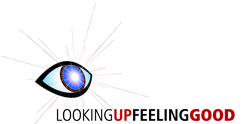Asking the unaskable question – Do we have a right not to die?
Strategic Futurist Marcus Barber has contributed a chapter to Volume Five of the ‘Death and Anti-Death’ Anthology which has just been published by Ria University. With contributors including Aubrey de Grey and Kevin Kelly and edited by Dr. Charles Tandy, Volume Five in the series is dedicated to the memory of Loren Eiseley, the renowned Anthropologist, science writer and environmental advocate.
Available through Amazon the full title is ‘Death And Anti-Death, Volume 5: Thirty Years After Loren Eiseley (1907-1977)’ and is available in hardcover for $39.95.
Marcus Barber’s chapter poses the question whether any individual has the right not to die, given the emergence of the wide assortment of technological developments available in the area of health and life extension. Barber suggests that the challenge is whether, given the wide disparity of health outcomes across the globe, any one individual with the financial means, has the right to extend their life indefinitely given the high rates of mortality elsewhere in the world.
Barber also posits four rules for identifying whether an entity can be considered ‘truly’ alive. He suggests that for an entity to be considered alive it must:
- Do whatever it takes to survive;
- Having achieved rule one, extend the ‘survival boundary’;
- When life conditions require it, ignore rule two and focus all resources on achieving rule one;
- At a certain point, switch off rule one
Although this chapter is written specifically for the Death and Anti-Death anthology, these ‘rules’ also pose additional issues for cognitive scientists and those involved with artificial intelligence.
Other chapters in the book consider cryogenics, the issue of anorexia and euthanasia, technology and more
Your Advanced Organisational Strategy events coincide with a specific need for your business and lead to excellent outcomes. These events are customed tailored to help you solve an organisational challenge or to answer a key exploratory question for you. The AOS focuses on two main objectives – to create a specific ‘How to’ for solving…
Read More >The idea behind Innovation is to create something new, that has yet to be conceived. A lot of the times that requires Counterintuitive thinking and that can be a very difficult challenge because it needs to break the habits in our thinking styles. For me the essence of being a futurist is the essence of…
Read More >- « Previous
- 1
- …
- 29
- 30
- 31

